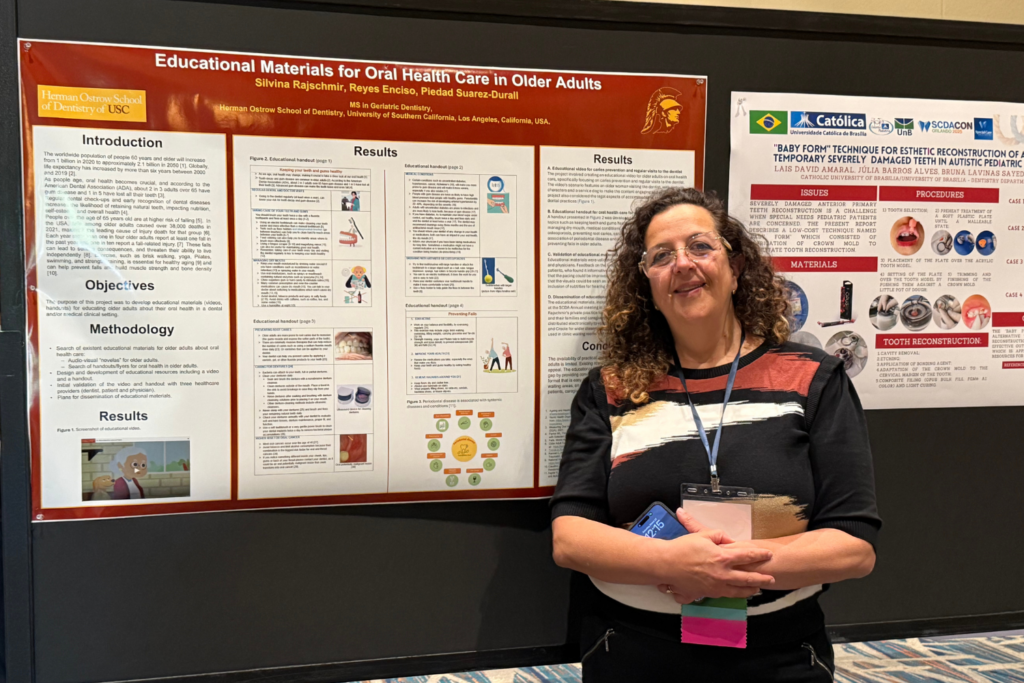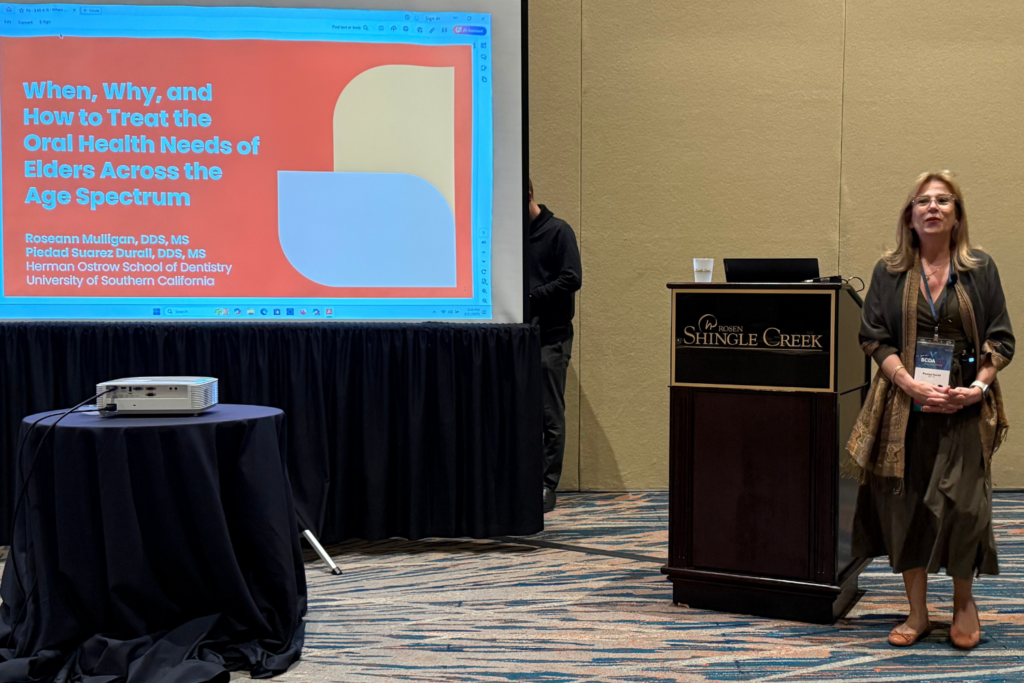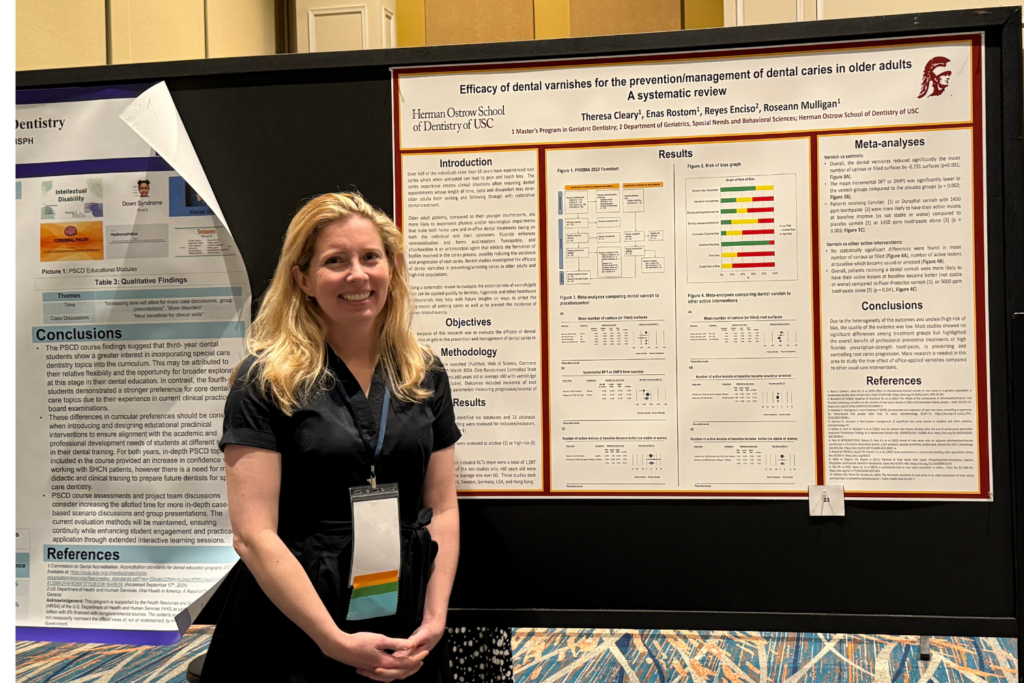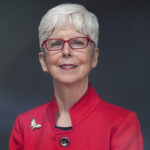What if the secret to transforming your elderly patients’ lives required more than a weekend conference—what if it demanded the rigorous, systematic education that only accredited university programs can provide?
The landscape of geriatric dentistry is undergoing a seismic shift. For the first time in history, older adults are retaining their natural teeth well into their 80s and 90s, fundamentally changing what it means to provide dental care to this population. Yet most dentists remain unprepared for this new reality, mistakenly believing that continuing education (CE) courses can substitute for the comprehensive, systematic training that only formal university degree programs provide.
The statistics tell a compelling story: natural tooth retention among seniors has increased dramatically, creating unprecedented opportunities for complex restorative and preventive care. However, the educational response has been inadequate. While undergraduate dental education in geriatric dentistry remains inconsistent across institutions, the dangerous misconception persists that attending professional conferences can equal the depth and rigor of formal academic programs.
The Critical Distinction: University Education versus Continuing Education
The Academic Gold Standard: Formal Degree Programs
Certificate and Master’s degree programs in Geriatric Dentistry represent the gold standard for professional competency. These programs provide systematic, comprehensive training through accredited institutions that undergo rigorous oversight. The distinction between university education and continuing education is not merely semantic—it is fundamental to patient safety and care quality.
Accreditation and Curriculum Standards: University programs must meet stringent accreditation standards from agencies such as the Western Association of Schools and Colleges (WASC). These standards require extensive curriculum committee review at both school and university levels, ensuring systematic progression of learning objectives (Sousa N, Santa-Cruz A et al., 2016). In contrast, continuing education providers need only meet minimal approval standards that focus on individual activities rather than comprehensive programs (ACCME, 2025).
Assessment and Accountability: Perhaps most critically, university programs require formal assessment with the possibility of failure. Students must demonstrate mastery through comprehensive examinations, clinical competency evaluations, and research projects. Grades are earned and recorded, creating accountability that simply does not exist in continuing education, where participants receive credit merely for attendance (Institute of Medicine, 2010).
Faculty Mentorship and Guided Learning: University programs provide sustained relationships with dedicated geriatric dentistry specialists who serve as mentors throughout the educational process. This ongoing guidance enables deep learning and professional development that cannot be replicated in the brief interactions typical of continuing education events (Forsetlund et al., 2021).

The Limitations of Continuing Education
Research consistently demonstrates the limited effectiveness of traditional continuing education approaches. Davis et al. (1999) found that didactic sessions—the predominant format at professional conferences—do not effectively change physician behavior or healthcare outcomes. The Institute of Medicine’s comprehensive review of continuing education concluded that “educational meetings alone or combined with other interventions can improve professional practice and healthcare outcomes for patients, but the effect is most likely to be small” (O’Brien et al., 2001).
The fundamental problem with continuing education as a primary learning strategy is its fragmented nature. CE activities typically address isolated topics without the systematic, progressive curriculum essential for developing competency in complex fields like geriatric dentistry. Furthermore, the lack of formal assessment means that attending a CE course provides no assurance that learning has occurred or that competency has been achieved.
The Hidden Complexity of Geriatric Oral Health
Caring for geriatric patients requires a complete paradigm shift from traditional dental practice. Unlike younger patients, elderly individuals present with complex medical histories, polypharmacy complications, cognitive changes, and physical limitations that dramatically impact treatment planning and execution. This complexity demands the systematic, comprehensive education that only formal academic programs can provide.
The aging process brings unique oral health challenges: xerostomia from medications, increased caries risk, periodontal complications from systemic diseases, and the delicate balance of maintaining function while managing multiple comorbidities. Many systemic conditions—from diabetes and cardiovascular disease to dementia and Parkinson’s—directly influence oral health outcomes and treatment approaches.
This level of complexity cannot be adequately addressed through isolated continuing education sessions. It requires the systematic, progressive learning that characterizes formal university programs, where students build understanding over months and years rather than hours or days.
Like what you’re learning? Download a brochure for our Geriatric Dentistry Master Program certificate or master’s degree program.
The Evidence: Why University Education Outperforms Continuing Education
Comprehensive Curriculum Development
University degree programs undergo extensive curriculum development processes that ensure comprehensive coverage of essential content. Curriculum committees at both departmental and institutional levels review course content, learning objectives, and assessment methods to ensure that graduates possess the necessary knowledge and skills (Frank JF., 2020). This systematic approach contrasts sharply with the ad hoc nature of continuing education, where topics are often selected based on popular appeal rather than systematic educational needs assessment.
Rigorous Assessment and Competency Validation
The assessment methods used in university programs provide valid and reliable measures of student learning and competency. These include written examinations, practical assessments, case presentations, and research projects that collectively evaluate the full range of knowledge and skills required for competent practice (Stalmeijer et al., 2014). In contrast, continuing education typically relies on attendance as the sole measure of participation, with minimal or no assessment of learning outcomes.

Quality Assurance Through Accreditation
University programs are subject to rigorous quality assurance processes through accreditation bodies that evaluate institutional compliance with established standards for educational quality. These standards address faculty qualifications, curriculum design, student assessment, and institutional resources (Amaral & Norcini, 2023). The accreditation process ensures that programs meet minimal standards for educational quality and undergo regular review for continuous improvement.
The Role of Continuing Education: Essential but Insufficient
This is not to diminish the value of continuing education entirely. Professional conferences and continuing education programs serve important functions as supplements to formal education:
- Updates on Current Research: Conferences provide access to cutting-edge research and evolving best practices
- Networking Opportunities: Professional meetings facilitate connections with specialists and peers
- Exposure to Diverse Approaches: Conferences offer exposure to different treatment methodologies and case presentations
- Maintenance of Competency: CE helps maintain current knowledge and fulfill licensure requirements
However, these benefits are maximized only when built upon a solid foundation of systematic training through dedicated academic programs.
Professional Development Through Conferences: Building on Strong Foundations
The Special Care Dentistry Association (SCDA): Premier Conference Programming
The Special Care Dentistry Association provides excellent continuing education opportunities that build upon existing knowledge in geriatric care. As the oldest complex dental care association, SCDA offers programming for practitioners with varying levels of expertise.
Key SCDA Opportunities:
- Annual SCDA Conference featuring cutting-edge geriatric dentistry research
- Specialized webinar series addressing real-world geriatric cases
- Networking with practitioners who have built successful geriatric-focused practices
- Evidence-based protocols for managing medically complex elderly patients
Accessible Entry Points: Major Conferences with Geriatric Tracks
State-Based Dental Associations: Larger annual meetings such as the Greater New York Dental Meeting (GNYDM) or the California Dental Association’s CDA Presents frequently offer specialized geriatric care programming, making them valuable supplements to formal education.
Academy of General Dentistry (AGD) Annual Meeting: AGD’s programming increasingly includes geriatric care components tailored specifically for general practitioners who want to better serve their aging patients.
International Perspectives: Global Leaders in Geriatric Dentistry
The European Congress of Gerodontology: A leading international forum dedicated to advancing geriatric dentistry through research, education, and clinical excellence.
International Association for Disability and Oral Health (iADH): While broader in scope, iADH’s biennial congress includes significant programming on geriatric patients, particularly those with age-related cognitive and physical disabilities.
The Transformative Impact: Why University-Level Education Matters
Evidence-Based Competency Development
University programs provide research-backed curricula that have been systematically designed to develop competency in geriatric dental care. Studies demonstrate that formal education programs with structured curricula, faculty mentorship, and comprehensive assessment are significantly more effective at developing professional competency than continuing education approaches (Goulet et al., 2013).
Interdisciplinary Collaboration Skills
Geriatric dentistry requires effective collaboration with other healthcare professionals. University programs provide systematic training in interdisciplinary care that prepares graduates to work effectively with geriatricians, nurses, social workers, and other professionals who serve elderly patients.
Research and Critical Analysis Skills
Master’s degree programs in geriatric dentistry develop research skills that enable practitioners to critically evaluate new treatments and contribute to the advancement of the field. This scientific foundation is essential for evidence-based practice and cannot be developed through continuing education alone.

The Return on Investment (ROI): Transforming Practice and Patient Lives
The specialized knowledge gained from formal geriatric dentistry education translates directly into measurable practice improvements:
- Enhanced Clinical Competency: Systematic training in age-related physiological changes and treatment modifications
- Reduced Complications: Comprehensive understanding of age-related risk factors and mitigation strategies
- Improved Patient Outcomes: Evidence-based approaches to geriatric oral health care
- Professional Recognition: Credentials that demonstrate specialized expertise to patients and colleagues
- Practice Growth: Reputation as a geriatric-specialist practice leads to increased referrals
Your Action Plan: From Awareness to Expertise
The question isn’t whether you can afford formal geriatric dentistry education—it’s whether you can afford to continue practicing without this essential knowledge. As the population ages and retains more natural teeth, every dentist will increasingly encounter complex geriatric cases.
Immediate Steps an interested clinician can pursue
- Prioritize Formal Education: Investigate geriatric dentistry certificate and master’s programs at accredited dental schools for comprehensive foundational training
- Assess Educational Needs: Determine whether you need a one-year certificate or more comprehensive master’s-level training based on your practice goals
- Select Accredited Programs: Ensure that any program you consider is offered by an accredited institution with rigorous curriculum oversight
- Supplement with Professional Development: Use continuing education conferences and webinars to stay current with evolving research and network with specialists
- Plan for Ongoing Learning: Establish relationships with academic mentors who can guide your professional development journey
- Consider International Perspectives: Investigate opportunities for global insights through international conferences and collaborations
The Ethical Imperative
Your elderly patients—who have fought to keep their natural teeth into their golden years—deserve practitioners equipped with the comprehensive knowledge and skills that only systematic, university-level education can provide. They deserve care that recognizes their unique physiological changes, respects their medical complexity, and honors their desire to maintain oral health and function.
Professional conferences serve as important supplements to formal geriatric dentistry education, but they cannot substitute for the systematic, comprehensive training that accredited university programs provide. The future of dentistry is aging, and practitioners who invest in formal specialized education today will be the leaders who transform elderly care tomorrow.
Postgraduate Geriatric Dentistry
Are you looking for improved ways to diagnose, treat, and manage the oral healthcare of older patients? Explore our online master’s and certificate program in Geriatric Dentistry.
References
ACCME, 2025, Accreditation Council for Continuing Medical Education https://accme.org/accreditation-process/maintaining-accreditation.
Amaral E, Norcini J. Quality assurance in health professions education: Role of accreditation and licensure. Med Educ. 2023 Jan;57(1):40-48. doi: 10.1111/medu.14880. Epub 2022 Jul 29. PMID: 35851495.
Davis D, O’Brien MA, Freemantle N, Wolf FM, Mazmanian P, Taylor-Vaisey A. Impact of formal continuing medical education: Do conferences, workshops, rounds, and other traditional continuing education activities change physician behavior or health care outcomes? JAMA. 1999 Sep 1;282(9):867-74. doi: 10.1001/jama.282.9.867. PMID: 10478694.
Forsetlund L, O’Brien MA, Forsén L, Reinar LM, Okwen MP, Horsley T, Rose CJ. Continuing education meetings and workshops: effects on professional practice and healthcare outcomes. Cochrane Database Syst Rev. 2021 Sep 15;9(9):CD003030. doi: 10.1002/14651858.CD003030.pub3. PMID: 34523128; PMCID: PMC8441047.
Frank JR, Taber S, van Zanten M, Scheele F, Blouin D; International Health Professions Accreditation Outcomes Consortium. The role of accreditation in 21st century health professions education: report of an International Consensus Group. BMC Med Educ. 2020 Sep 28;20(Suppl 1):305. doi: 10.1186/s12909-020-02121-5. PMID: 32981519; PMCID: PMC7520947.
Goulet F, Hudon E, Gagnon R, Gauvin E, Lemire F, Arsenault I. Effects of continuing professional development on clinical performance: results of a study involving family practitioners in Quebec. Can Fam Physician. 2013 May;59(5):518-25. PMID: 23673591; PMCID: PMC3653659.
Institute of Medicine. (2010). Redesigning continuing education in the health professions. Washington, DC: The National Academies Press. https://doi.org/10.17226/12704
O’Brien, M. A., Freemantle, N., Oxman, A. D., Wolf, F., Davis, D. A., & Herrin, J. (2001). Continuing education meetings and workshops: Effects on professional practice and health care outcomes. Cochrane Database of Systematic Reviews, (2), CD003030. DOI: 10.1002/14651858.CD003030
Sousa N, Santa-Cruz A, Melo A, Sousa C, Marques F, Leite-Almeida H, Souza L, Marangoni M, Raia M, Santos M, Goncalves N, Morgado P, Souza P, Matos Sousa R, Gomes S, Santos W, Araújo B, Amaral E, Pereira V, Scoles P; MAPS. A hitchhikers’ guide to the terminology of accreditation processes for health professionals and institutions. MedEdPublish (2016). 2023 Feb 27;13:11. doi: 10.12688/mep.19566.1. PMID: 38028656; PMCID: PMC10652034.
Stalmeijer RE, Mcnaughton N, Van Mook WN. Using focus groups in medical education research: AMEE Guide No. 91. Med Teach. 2014 Nov;36(11):923-39. doi: 10.3109/0142159X.2014.917165. Epub 2014 Jul 29. PMID: 25072306.

